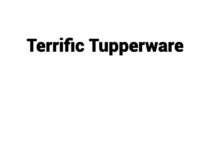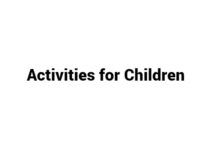Table of Contents
Passage
The first area of criticism concerns the extent to which the results of ‘scientific’ educational research are valid. It has often been argued that, although the numerical evidence produced by such research has the appearance of being ‘ hard data’ of the kind used in the natural sciences, there are, in fact, fundamental doubts about its validity; about whether it represents accurately what it claims to represent. We can get a sense of these criticisms by looking briefly at the work of Piaget, mentioned earlier. Interestingly, this was not strongly quantitative in character, and it has been criticized by some for being insufficiently rigorous from an experimental point of view; reflecting, at least in part, a difference between Piaget and commentators on his work about the requirements of scientific research. This highlights the point we made earlier: that although it is convenient to refer to the ‘scientific method’, there is, in fact, a variety of interpretations of what is involved in a scientific approach to research and of how it should be applied to the study of human beings and their behaviours.
A Piaget carried out a number of experiments on the basis of which he developed the idea that children go through different stages of development, and that only when they have reached the necessary stage of development can they carry out the most advanced forms of cognitive operation. A famous experiment of his requiring children to compare the amount of liquid held by different shaped containers. The containers had the same capacity, and even when young children were shown that the same amount of liquid could be poured between the two containers, many claimed that one was larger than the other. Piaget’s interpretation of this was that the children were unable to perform the logical task involved in recognizing that the two containers, while different in shape, were the same in capacity; this being because their cognitive development had not reached the necessary stage. Critics of his work have questioned this conclusion, for instance, Donaldson. They raise the possibility that the children were simply unwilling to play the experimenter’s game, or that the children misunderstood what the experimenter was asking. These criticisms point to the fact, obvious enough, but important in its implications that experiments are social situations in which interpersonal interactions take place. The implication is that Piaget’s work and attempts to replicate it are not only measuring the children’s capacities for logical thinking, but also the extent to which they have understood what was required , their willingness to comply with these requirements, the experimenters’ success in communicating what was required, in motivating the children, etc.
B Similar criticisms have been applied to psychological and educational tests. For example, Mehan points out how test questions may be interpreted in ways different from those intended by the researcher. In all language development test, children are presented with a picture of a medieval fortress, complete with moat, drawbridge, and parapets and three initial consonants: D, C, and G. The child is supposed to circle the correct initial consonant C for ‘castle’ is correct, but many children choose D. After the test, when I asked those children what the name of the building was, they responded ‘Disneyland’. These children used the same line of reasoning intended by the tester, but they arrived at the wrong substantive answer. The score sheet showing a wrong answer does not document a child’s lack of reasoning ability; it only documents that the child indicated an answer different from the one the tester expected.
C Here we have questions being raised about the validity of the sort of measurements on which the findings of quantitative research are typically based. Some, including for example Donaldson, regard these as technical problems that can be overcome by more rigorous experimentation. Others, however, including Mehan, believe them to be not simply problems with particular experiments or tests, but serious threats to validity that potentially affect all research of this kind.

D At the same time, questions have also been raised about the assumption built into the logic of quantitative educational research that causes can be identified by physical and/or statistical manipulation of variables. Critics suggest that this fails to take account of the very nature of human social life, assuming it to consist of fixed, mechanical causal relationships, whereas in fact it involves complex processes of interpretation and negotiation that do not have determinate outcomes. From this point of view, it is not clear that we can understand why people do what they do in terms of the simple sorts of causal relationships on which quantitative research focuses. Social life, it is suggested, is much more contextually variable and complex.

E Such criticisms of quantitative educational research have been the stimulus for an increasing number of educational researchers, over the past thirty or forty years, to adopt more qualitative approaches. These researchers have generally rejected attempts to measure and control variables experimentally or statistically. Qualitative research can take many forms; loosely indicated by such terms as ‘ethnography’, ‘case study’, ‘participant observation’, ‘life history’, ‘unstructured interviewing’, ‘discourse analysis’, etc. In general, though, it has the following characteristics:
F A strong emphasis on exploring the nature of particular educational phenomena, rather than setting out to test hypotheses about them. A tendency to work with ‘unstructured data’: that is, data that have not been coded at the point of collection in terms of a closed set of analytical categories. When engaging in observation, qualitative researchers therefore audio-or video-record what happens or write detailed open-ended field-notes, rather than coding behaviour in terms of a predefined set of categories, as would a quantitative researcher employing ‘systematic observation’. Similarly when interviewing, open-ended questions will be asked rather than questions requiring predefined answers of the kind typical, for example, of postal questionnaires. In fact, qualitative interviews are often designed to be close in character to casual conversations.
G Typically, a small number of cases will be investigated in detail, rather than any attempt being made to cover a large number, as would be the case in most quantitative research, such as systematic observational studies or social surveys. The analysis of the data involves explicit interpretations of the meanings and functions of human actions, and mainly takes the form of verbal descriptions and explanations. Quantification and statistical analysis play a subordinate role at most. The two areas of educational research where criticism of quantitative research and the development of qualitative approaches initially emerged most strongly were the sociology of education and evaluation studies. The trend towards qualitative research in the sociology of education began in the UK in the l960s with studies of a boys’ grammar school, a boys’ secondary modern school, and a girls’ grammar school by Lacey, Hargreaves and Lambart. They employed an ethnographic or participant observation approach, though they also collected some quantitative data on, for example, friendship patterns among the pupils. These researchers observed lessons, interviewed teachers and pupils, and drew on school records. They studied the schools for relatively long periods, spending many months collecting data and tracing changes over time.
Questions
Questions 14-17 Use the information in the passage to match the people(listed A-C) with experiment or explanation below. Write the appropriate letters A-C in boxes 14-17 on your answer sheet.
A Piaget
B Mehan
C Donaldson
14 a wrong answer indicate more of a child’s different perspective than incompetence in reasoning.
15 logical reasoning involving in the experiments is beyond children’s cognitive development.
16 Children’s reluctance to comply with game rules or miscommunication may be another explanation.
17 Kinds of experiments or tests are flawed essentially and will not justify by a more rigorous approach.
Questions 18-21 Complete the following summary of the paragraphs of Reading Passage, using no more than two words from the Reading Passage for each answer. Write your answers in boxes 18-21 on your answer sheet.
Quantitative research in education has sparked debate that whether it is 18 ………………. in scientific area. Piaget’s experiment involved on children’s steps on development, which used equal amount of 19 ………………. in a couple of containers, to test if student would be able to judge their size. Another quantitative research was carried out by Mehan, he showed children a 20 ………………. , and requested children to make answers, but ultimately most of them failed. In 1960s, another method emerged along with quantitative research, 21 ………………. in the UK were taken as experiment sites in application of the combined approach.
Questions 22-24 Choose the correct letter, A to F. Write your answers in boxes 22-24 on your answer sheet. Choose THREE correct statements of “qualitative research” features below:
A work with well-organised data in a closed set of analytical categories
B record researching situations and apply note taking
C design the interview to be in an atmosphere like easy conversation
D questionnaires full with details instead of loads of data
E questionnaires full of requiring open-ended answers
F code behaviour in terms of a predefined set of categories
Question25 Choose the correct letter, A, B, C or D. Write your answers in boxes 25 on your answer sheet.
What is the main idea of this passage?
A to educate children that quantitative research are most applicable
B to illustrate the society lack of deep comprehension of educational approach
C to explain that quantitative research ideas, characteristics from related criticisms
D to imply that qualitative research is a flawless method compared with quantitative one
Answers



